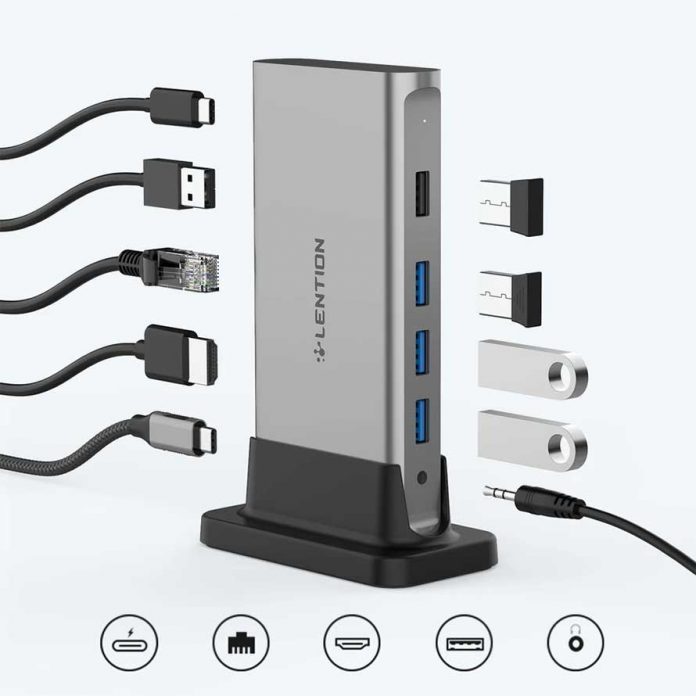Table of Contents
There used to be a time wherein a characteristic laptop would have number of ports. This allowed a user to attach a range of devices to MacBook. With time, manufacturers no longer saw the need to have several ports over MacBook. The number of users who were not amused was many.
There is a reason behind this development which is important to understand:
Reason Behind this Development
If we take a look at the laptops manufactured a decade ago, they were really nice while being thick and heavy. If one was to carry them to office from and vice-versa, one would get tired.
Hence came in the trend of using one computer from home and the other from office. But the problem which arose from the arrangement was that it resulted in distraught for office management. Receiving emails from home computer to office resulted in potential security virus threats.
Offices came to realize that they wanted all data over a dedicated laptop, and maybe the server or cloud storage, but not shared on two laptops. This is just one of the reasons why slimmer laptops became fashionable. But the true reason that led to the development was more generic and important.
In technology, we see that bigger always makes way for slimmer. The first computers made in the world were as large as a room. They transformed into laptops that can easily be carried in a laptop bag, wherever a user goes.
The same is the case with TV sets. TVs, earlier, used to be like boxes with the screen on one side. They were difficult to maintain and carry. Over time, the era of slim screen TVs caught momentum. Nowadays, finding vendors for televisions do not have a slim body is not easy.
Cycle of Technological Development
MacBook going slimmer is the natural cycle of technological development. However, they nowadays have only two or four USB-C/Thunderbolt 3 ports depending upon the make and model. This presents a dilemma for a user, who will want his laptop to have USB-A port, along with Ethernet, HDMI, DisplayPort and VGA ports.
There are some ways in which the USB-C port cannot be used for the required application, while you do not use an adapter. Just as an instance, when you intend to attach a USB-A pen drive to your MacBook, you cannot do so while you do not use an adapter. One may have movies, audios and important data stored over one’s pen drive. But to make use of the same over one’s MacBook; one should necessarily have an adapter.
This explains the value of having an usb-c multiport hub adapter. There is no end to the number of ways in which one can put his usb-c multiport hub to use with the MacBook. This opens up a number of possibilities for using the MacBook.
Let us take a look at the top factors to keep in mind when investing in an usb-c multiport hub:
usb-c multiport hub
One has to see how many ports he wants the usb-c multiport hub to have. There is no point in going for a 12-port hub if you are not going use it. But keeping some scope for the usability of multiport adapter for the future is also important. Just as an instance, if you currently attach a keyboard and a mouse to your multiport adapter, you may want to attach a printer in the future.
Similarly, if you currently use the internet over Wi-Fi, you may want to use a wired LAN network in the future. But this can only be accomplished when an usb-c multiport hub has an Ethernet port. So when you go for an usb-c multiport hub with an Ethernet port, it is an investment against having to invest in another multiport adapter at a later point in time.
Let us consider instance. Let us suppose that you do not currently use a USB-A pen drive. But suppose a friend comes along who wants to share some data over his USB-A drive. Then, you will feel the need to have a multiport adapter with USB-A drive. There are only a few ways of downloading the data otherwise, such as sending it over email or dropbox, after downloading it over an older computer. But transferring the data directly to MacBook is the most easy and convenient way. Therefore, your usb-c multiport hub is better off having a USB-A port.
HDMI Ports
HDMI port is another useful port for your usb-c multiport hub. It gives you the liberty to transfer the audio and visuals of movies streaming over Netflix, over your large screen TV. This adds to the customer delight and enhances the viewing experience. HDMI port is similarly used to connect the MacBook to home theatre or speakers. This will bring essence to high speed video gaming and make it more fun.
DisplayPort is similarly a port over a few of the usb-c multiport hubs, which brings efficiency to work and value to high speed gaming. Enjoying videogames over the monitor of your MacBook is fun, but imagine if you can enjoy simulated display over three monitors, all at once. This is made possible with DisplayPort.
When one attaches three monitor screens using DisplayPort, the video signal breaks down into three streams of audio and visual data, which is sent to the three monitors respectively. This is achieved by packetized transmission of data, which is synced with a timer clock. Playing video games, while using three screens, makes them more fun.
Similarly, when you use the DisplayPort along with everyday work, the work becomes more efficient because the data that is not currently in use can be maintained over an alternative monitor display. It makes the work space clean.
Long cable usb c hub
When you use any of the ports of the usb-c multiport hub, having the right cables for the same is also a must. A range of choices will open up for one in this regard. The cables should have the right connecting sockets, depending on the ports to be used. They should also have a sturdy jacket for a long life. One will have a choice at using long cable usb c hub or a short cable. A longer cable will bring ease to one’s computer work.















